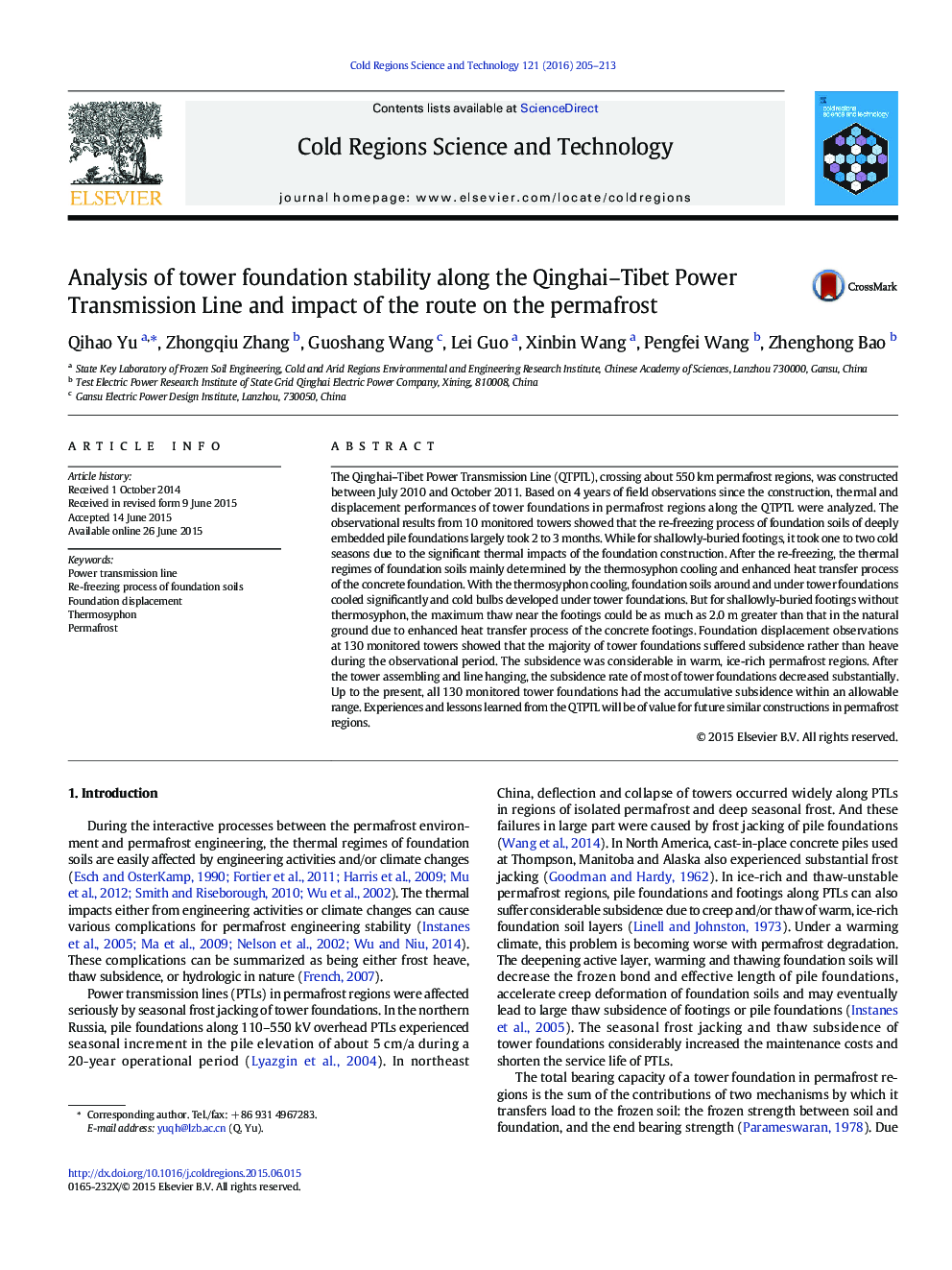| کد مقاله | کد نشریه | سال انتشار | مقاله انگلیسی | نسخه تمام متن |
|---|---|---|---|---|
| 6426680 | 1634443 | 2016 | 9 صفحه PDF | دانلود رایگان |

- Re-freezing process of tower foundation soils and its impact factors are analyzed.
- Thermal regimes of tower foundation soils during a 4-year operation phase are analyzed.
- Displacement development of tower foundations and the mechanism are analyzed.
- Recommendations for construction and design of piles and footings are put forward.
The Qinghai-Tibet Power Transmission Line (QTPTL), crossing about 550Â km permafrost regions, was constructed between July 2010 and October 2011. Based on 4Â years of field observations since the construction, thermal and displacement performances of tower foundations in permafrost regions along the QTPTL were analyzed. The observational results from 10 monitored towers showed that the re-freezing process of foundation soils of deeply embedded pile foundations largely took 2 to 3Â months. While for shallowly-buried footings, it took one to two cold seasons due to the significant thermal impacts of the foundation construction. After the re-freezing, the thermal regimes of foundation soils mainly determined by the thermosyphon cooling and enhanced heat transfer process of the concrete foundation. With the thermosyphon cooling, foundation soils around and under tower foundations cooled significantly and cold bulbs developed under tower foundations. But for shallowly-buried footings without thermosyphon, the maximum thaw near the footings could be as much as 2.0Â m greater than that in the natural ground due to enhanced heat transfer process of the concrete footings. Foundation displacement observations at 130 monitored towers showed that the majority of tower foundations suffered subsidence rather than heave during the observational period. The subsidence was considerable in warm, ice-rich permafrost regions. After the tower assembling and line hanging, the subsidence rate of most of tower foundations decreased substantially. Up to the present, all 130 monitored tower foundations had the accumulative subsidence within an allowable range. Experiences and lessons learned from the QTPTL will be of value for future similar constructions in permafrost regions.
Journal: Cold Regions Science and Technology - Volume 121, January 2016, Pages 205-213